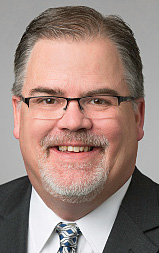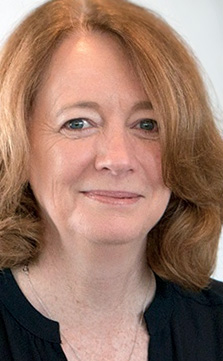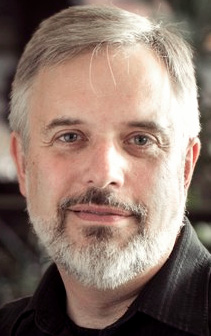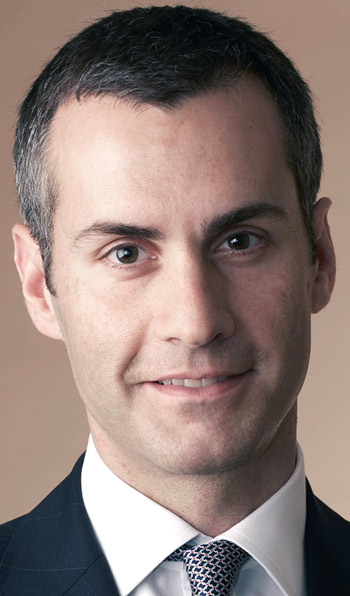

Open Source (OS) Management and Orchestrations (MANO) is a European Telecommunications Standards Institute (ETSI) initiative that aims to develop a Network Function Virtualization (NFV) MANO software stack, aligned with ETSI NFV. The main goal of MANO is to simplify the onboarding of virtual network components in telco cloud data centers. The initiative has gained impressive momentum among leading Communication Service Providers (CSPs) around the world as part of their NFV programs. more
 The domain name system is in good health. But it's about to get even better. The Domain Name Association (DNA), the Internet domain industry's trade association, undertook an effort in 2016 it named the Healthy Domains Initiative (HDI). It's an ambitious, self-motivated effort to build on the DNS' already secure and stable platform and meet select challenges head-on, before they develop. more
The domain name system is in good health. But it's about to get even better. The Domain Name Association (DNA), the Internet domain industry's trade association, undertook an effort in 2016 it named the Healthy Domains Initiative (HDI). It's an ambitious, self-motivated effort to build on the DNS' already secure and stable platform and meet select challenges head-on, before they develop. more
 Five years ago today, the ICANN Board committed to opening a second application window for the New gTLD Program as expeditiously as possible. The same resolution also directed the ICANN CEO to publish a document describing the work plan required prior to initiating a second application window. Ask a Board member or ICANN staff when they expect the next application window to open, and they will inevitably suggest 2020 -- another three years away. more
Five years ago today, the ICANN Board committed to opening a second application window for the New gTLD Program as expeditiously as possible. The same resolution also directed the ICANN CEO to publish a document describing the work plan required prior to initiating a second application window. Ask a Board member or ICANN staff when they expect the next application window to open, and they will inevitably suggest 2020 -- another three years away. more
 US leadership and influence online stems from US innovation and corporate risk-taking. But it also is the direct result of US Government policy. In the early days of the web and e-commerce, the Clinton administration recognized they had to figure out a strategy to reconcile the internet, which is global, with laws and regulations, which are domestic. Instead of demanding negotiations for shared global rules, Administration officials put forward a set of principles, which they called the Framework for Global Electronic Commerce. more
US leadership and influence online stems from US innovation and corporate risk-taking. But it also is the direct result of US Government policy. In the early days of the web and e-commerce, the Clinton administration recognized they had to figure out a strategy to reconcile the internet, which is global, with laws and regulations, which are domestic. Instead of demanding negotiations for shared global rules, Administration officials put forward a set of principles, which they called the Framework for Global Electronic Commerce. more
 Your first line of defense to any DDoS, at least on the network side, should be to disperse the traffic across as many resources as you can. Basic math implies that if you have fifteen entry points, and each entry point is capable of supporting 10g of traffic, then you should be able to simply absorb a 100g DDoS attack while still leaving 50g of overhead for real traffic... Dispersing a DDoS in this way may impact performance -- but taking bandwidth and resources down is almost always the wrong way to react to a DDoS attack. But what if you cannot, for some reason, disperse the attack? more
Your first line of defense to any DDoS, at least on the network side, should be to disperse the traffic across as many resources as you can. Basic math implies that if you have fifteen entry points, and each entry point is capable of supporting 10g of traffic, then you should be able to simply absorb a 100g DDoS attack while still leaving 50g of overhead for real traffic... Dispersing a DDoS in this way may impact performance -- but taking bandwidth and resources down is almost always the wrong way to react to a DDoS attack. But what if you cannot, for some reason, disperse the attack? more
 Domain names may be confusingly similar to trademarks or even identical or but not infringing. This is particularly true of trademarks acquired later than the allegedly infringing domain names ArcBest Corporation v. Domains By Proxy, LLC, Registration Private / Vernon Troupe, D2016-2381 (WIPO January 13, 2017) (<arcbest.com>, in which "ark" is a contraction of "Arkansas"), but it can also apply to marks composed of common element that predate domain name registration... more
Domain names may be confusingly similar to trademarks or even identical or but not infringing. This is particularly true of trademarks acquired later than the allegedly infringing domain names ArcBest Corporation v. Domains By Proxy, LLC, Registration Private / Vernon Troupe, D2016-2381 (WIPO January 13, 2017) (<arcbest.com>, in which "ark" is a contraction of "Arkansas"), but it can also apply to marks composed of common element that predate domain name registration... more
 I firmly believe that we need to protect any form of intellectual properties (IP) built by one through hard and honest work. At the same time, I also believe that several of the current methods of protecting IP, such the as the copyright laws, patent systems and legislations, are not evolving fast enough in order to protect IP and avoid hindering the path of creativity and innovation. more
I firmly believe that we need to protect any form of intellectual properties (IP) built by one through hard and honest work. At the same time, I also believe that several of the current methods of protecting IP, such the as the copyright laws, patent systems and legislations, are not evolving fast enough in order to protect IP and avoid hindering the path of creativity and innovation. more
 The global debate on Internet Governance has come a long way since 2005. In the 12 years following the World Summit on the Information Society (WSIS) in Tunis, governments have paid more attention than ever to policies that can promote economic development, security, and innovation. You may not have felt the progress, however; if it is hard to see a reduction in the confusion and "soup of forums" described on this site nearly six years ago, this is because as we have made progress, the scope of the issues addressed have increased to match. more
The global debate on Internet Governance has come a long way since 2005. In the 12 years following the World Summit on the Information Society (WSIS) in Tunis, governments have paid more attention than ever to policies that can promote economic development, security, and innovation. You may not have felt the progress, however; if it is hard to see a reduction in the confusion and "soup of forums" described on this site nearly six years ago, this is because as we have made progress, the scope of the issues addressed have increased to match. more
 There are several perspectives from which one can give various answers to the question of 'what are domain names?'. Originally the domain name system started and continues to be a human-friendly way of addressing to a set of machines or specific machine connected to the Internet. Hence, from the technical perspective, a domain name is simply an address consisting of a combination of alphanumeric and symbols to communicate with a machine which also happens to be hosting certain services in form of data and information on it. more
There are several perspectives from which one can give various answers to the question of 'what are domain names?'. Originally the domain name system started and continues to be a human-friendly way of addressing to a set of machines or specific machine connected to the Internet. Hence, from the technical perspective, a domain name is simply an address consisting of a combination of alphanumeric and symbols to communicate with a machine which also happens to be hosting certain services in form of data and information on it. more
 Although filing fees in domain name disputes are usually paid for by the trademark owner that files a complaint, the Uniform Rapid Suspension System (URS) contains a little-noticed provision that, in large cases, requires the domain name registrant to pay a fee to defend itself. The so-called "Response Fee" is only required in URS cases that include 15 or more disputed domain names. more
Although filing fees in domain name disputes are usually paid for by the trademark owner that files a complaint, the Uniform Rapid Suspension System (URS) contains a little-noticed provision that, in large cases, requires the domain name registrant to pay a fee to defend itself. The so-called "Response Fee" is only required in URS cases that include 15 or more disputed domain names. more
 Who do you think deserves recognition in the Internet Hall of Fame? Do you know of someone who has played a key role in the Internet's development who should be recognized? (And is not already among the existing IHOF inductees?) If you know of someone who deserves the recognition, nominations are open until March 15, 2017. As outlined by Internet Society President & CEO Kathy Brown in a blog post today, the Internet Hall of Fame seeks to honor three types of inductee. more
Who do you think deserves recognition in the Internet Hall of Fame? Do you know of someone who has played a key role in the Internet's development who should be recognized? (And is not already among the existing IHOF inductees?) If you know of someone who deserves the recognition, nominations are open until March 15, 2017. As outlined by Internet Society President & CEO Kathy Brown in a blog post today, the Internet Hall of Fame seeks to honor three types of inductee. more
 Over the past year as the impending doom of a potential Trump installation in the U.S. WhiteHouse pervaded the international organization community, my former chief-of-staff at the ITU found consolation in Swiss history. Now retired with his wife formerly with the World Health Organization in the mountains near the tranquil Canton Vaud municipality of Château-d'Oex, he pointed his old friends to its heritage site. more
Over the past year as the impending doom of a potential Trump installation in the U.S. WhiteHouse pervaded the international organization community, my former chief-of-staff at the ITU found consolation in Swiss history. Now retired with his wife formerly with the World Health Organization in the mountains near the tranquil Canton Vaud municipality of Château-d'Oex, he pointed his old friends to its heritage site. more
 When a tax is too high people avoid it, and when the political cost of supporting the US government becomes too high, foreign governments will avoid it too. Add to that cost America's new inclination to withdrawal, and consider the muddy tidal flat on which could soon list the hull of what used to be American technological primacy... When countries try to develop technology policies to compete with the United States, they often begin with rules over immigration. more
When a tax is too high people avoid it, and when the political cost of supporting the US government becomes too high, foreign governments will avoid it too. Add to that cost America's new inclination to withdrawal, and consider the muddy tidal flat on which could soon list the hull of what used to be American technological primacy... When countries try to develop technology policies to compete with the United States, they often begin with rules over immigration. more
 I doubt that any elementary school in the US has fiber to the premises, but, in 2013, an elementary school in rural Bhutan was connected to the Internet using optical fiber in the "last mile." They were able to connect the school because the cabling they used, metal-packed armored cable (M-PAC), which is modeled on undersea cables, does not have to be in a protective duct. It is 4mm in diameter, light and flexible, so it can be installed by supervised volunteers or unskilled workers.
I doubt that any elementary school in the US has fiber to the premises, but, in 2013, an elementary school in rural Bhutan was connected to the Internet using optical fiber in the "last mile." They were able to connect the school because the cabling they used, metal-packed armored cable (M-PAC), which is modeled on undersea cables, does not have to be in a protective duct. It is 4mm in diameter, light and flexible, so it can be installed by supervised volunteers or unskilled workers.
more
 Advancements in virtual private networking have extended system capabilities for service providers. Providers can divide LANs into multiple discrete segments using either Virtual Local Area Networks (vLANs), leverage Multiprotocol Label Switching (MPLS) or Virtual Routing and Forwarding (VRF) to host Virtual Private Networks (VPNs) that support service operations over multiple instances. more
Advancements in virtual private networking have extended system capabilities for service providers. Providers can divide LANs into multiple discrete segments using either Virtual Local Area Networks (vLANs), leverage Multiprotocol Label Switching (MPLS) or Virtual Routing and Forwarding (VRF) to host Virtual Private Networks (VPNs) that support service operations over multiple instances. more
Sponsored byVerisign

Sponsored byDNIB.com

Sponsored byWhoisXML API

Sponsored byIPv4.Global

Sponsored byRadix

Sponsored byVerisign

Sponsored byCSC
